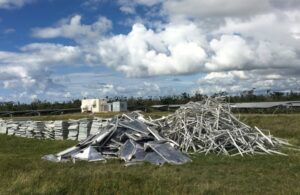Solar module lifetimes are becoming longer. Currently, solar panels are expected to last 25 to 30 years, and the Department of Energy recently announced funding for an initiative to increase the standard solar module lifetime to 50 years. As unit lifetimes lengthen, module warranties are becoming even more important for asset operators and operation and maintenance (O&M) managers because fixing faulty modules will have an even bigger impact on their return on investment (ROI). There is a consensus in the PV industry that aerial thermographic inspection is a powerful qualitative analysis tool that can help O&M managers quickly identify defective modules that are eligible to be claimed under warranty.
PV modules typically come with two separate warranties: a product warranty and performance warranty. Product warranties cover malfunctions that are caused during the assembly of the module. Utility scale solar module manufacturer Canadian Solar states that their 15 year product warranty “will only be accepted if the Buyer can prove that the malfunctioning or nonconformity of the Products results exclusively from defects in materials and/or workmanship under normal application, installation, use and service conditions specified in [the] standard product documentation.” Product warranties can be difficult to successfully claim since it is the asset manager’s responsibility to provide proof that the defect occurred as a result of the manufacturing process.
Performance warranties, on the other hand, guarantee a minimum level of output for each year of the module’s life. The manufacturer determines an acceptable percentage of output lost annually and offers to replace or repair modules that fail to meet those output requirements. Hanwha offers a 25 year limited performance warranty that guarantees that “In the first year after the Purchase Date the Modules will produce a minimum power output of at least 97% of that specified in the Module data sheet.”

From year 2 through 25, the module should lose no more than 0.6% output annually, meaning that a module is guaranteed to output at least 83% of the labeled power output by the end of it’s 25 year warranty period. Most utility scale module manufacturers will offer a 25 year performance limited warranty guaranteeing roughly 80% performance through the end of the warranty period.

Performance warranties are easier to successfully claim than product warranties since the owner only needs to provide evidence of an unacceptable amount of power loss. Output loss can be caused by a number of factors including hot spots, bypass diode malfunctions, and string anomalies. All of these issues are clearly identifiable when conducting an aerial thermographic inspection.

Despite the public expectation of replacing traditional I-V curve tracing and open-circuit testing entirely with aerial inspection, it still has many practical limitations to meet quantitative analysis requirements. The thermal cameras used do not provide precise enough data to satisfy performance warranty requirements. Even radiometric thermal cameras, which are able to “measure” the temperature of objects in an image, often do not provide accurate enough data. In the technical specifications of the International Electrotechnical Commission (IEC) TS 62446-3, “Photovoltaic (PV) systems – Requirements for testing, documentation, and maintenance Part 3: PV modules and plants – Outdoor infrared thermography”, requires that thermal imaging equipment used to test system output must have a margin of error of ±2 Kelvin, while the widely-accepted industry standard DJI Zenmuse series, have a margin of error of ±5 C. In addition to the traditional methods of I-V curve tracing and open circuit testing, stationary, high-precision calibrated handheld thermal measure tools remain the most reliable way to capture the data necessary to prove output degradation.

However, aerial thermography excels as a qualitative analysis tool. During an aerial inspection, every individual module on a solar farm is surveyed using thermal imaging to tag modules that show signs of defect. Solar technicians are then able to quickly and easily locate the malfunctioning modules in the field, saving time and money on what could otherwise be a lengthy inspection process. Once the problematic modules are identified, a field technician can efficiently verify output degradation using I-V curve tracing and open circuit testing, and a valid warranty claim can be submitted.
Optimizing site output is the key to maximizing ROI. On large sites with hundreds of thousands of PV modules, it can be difficult to guarantee that every individual module is performing up to the manufacturer’s guaranteed standards. Incorporating routine aerial thermographic inspections into an O&M program ensures that every module on a site is functioning at maximum capacity, making sure your solar farm is giving you the returns you deserve.
If you are interested in learning more about how aerial inspection can optimize your yield, please contact us at www.aerospec.us for more information or to schedule a demo today.




